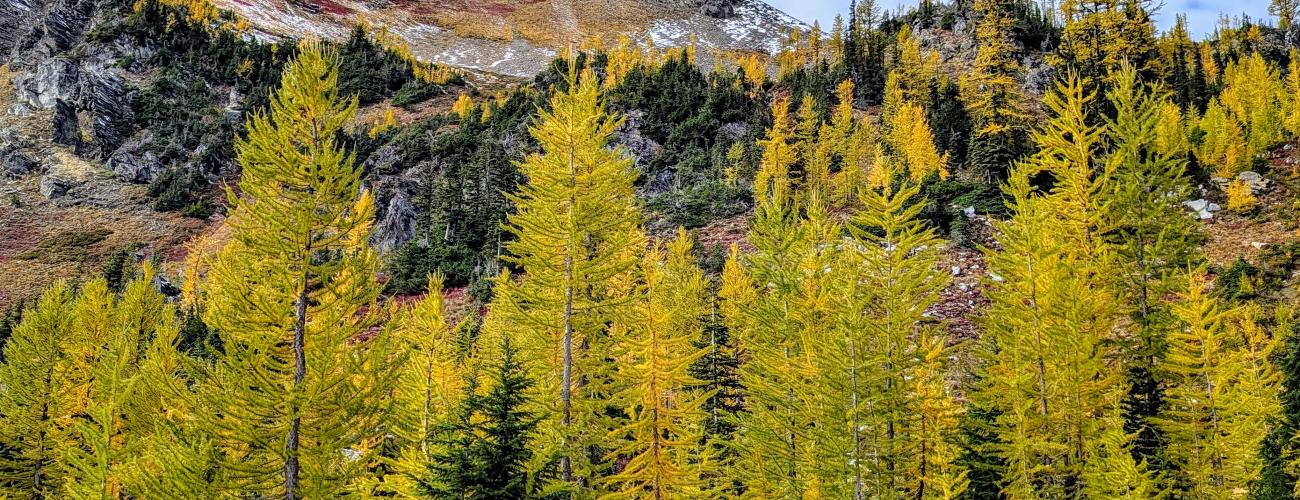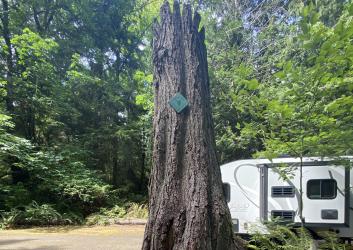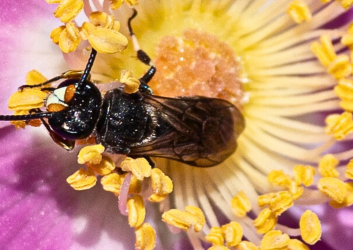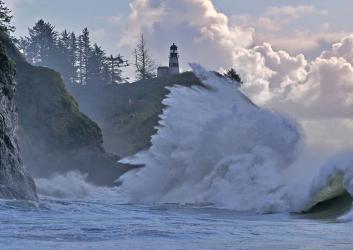The beloved and baffling larch tree
By State Parks Arborists James Gouldin, Edwin Torres and Beowulf Brower, Agency Forester David Cass and Communications Consultant Meryl Lassen)
Every October, many Washingtonians succumb to “larch madness.” The phenomenon drives them to hike and road-trip in north-central and northeastern Washington, where they search for, marvel at and photograph these strange conifers that change color and lose their “needles.”
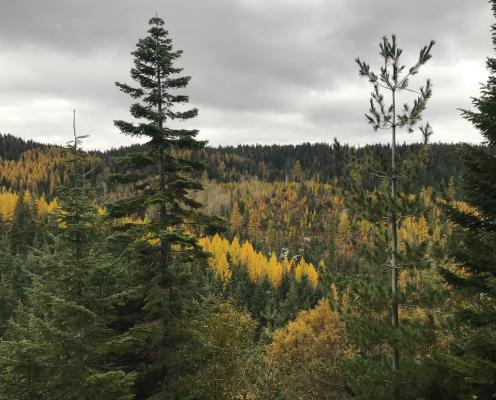
Weird conifers
Larches (Larix spp.) are indeed unusual members of the conifer family, like the glamorous and eccentric cousin who comes to family dinners in gold lame, or worse – dresses down to their skivvies in winter!
We find two main larch species in Washington. One is the western larch (Larix occidentalis), and the other, which grows in our mountain regions, is the subalpine larch (Larix lyallii).
Whereas western larches have a triangular shape and narrow crown, subalpine larches have more of a spreading habit. Subalpine larches don’t get as tall as western larches and are typically found in cold, snowy locations from 5,800 to 7,500 feet above sea level.
Unlike their evergreen cousins, larches are deciduous and drop all their leaves (which look like needles) each autumn. In late September, they begin turning greenish gold. By early October, they’re orange. Then, their color fades and they go bare.
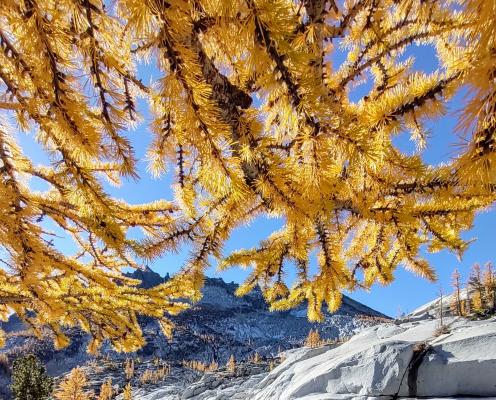
What do they look like in other seasons?
Larches are among the earliest trees to come into leaf in spring, with leaves growing in clusters on short shoots called spurs along their twigs and branches.
Their leaves feel softer than the usual conifer suspects — think fuzzy. They are also bright, vibrant green, which makes them pop alongside their dark, dusky evergreen neighbors.
The mature trees have reddish-brown bark that becomes deeply furrowed and, like other members of the pine family, branches may break away from the trunk in jigsaw puzzle-shaped pieces.
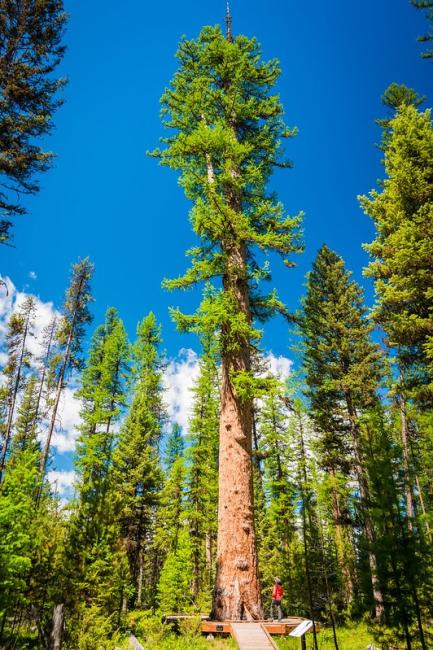
As old as the hills
Larches are long-lived trees – a 500-year lifespan is not unusual. To achieve their longevity, they can lose much of their canopy and still regrow leaves the following year.
Several 800-year-old larches have been documented. There’s even a 1,000-year-old western larch in Montana, which the locals call Gus.
Among the 10 known larch species found primarily in North America, Asia and Europe, Gus appears to be the world’s tallest larch, standing 163 feet high, plus another 10-foot dead top. Gus has a circumference of 22.5 feet.
Evolutionary adaptation
Larch lurkers may ask why these trees drop their leaves.
The answer: they’ve evolved to maximize the benefits of being both deciduous and coniferous. This helps them thrive where they live. They evolved their slender, needle-like leaves with little surface area, so they can resist drought (less surface area means less moisture loss). Slender leaves and branches also hold less snow in winter and catch less wind, making them less prone to breakage.
Dropping their leaves before winter lets them save energy and focus on growth during the warmer, sunnier months, when conditions for photosynthesis are better.
The tradeoffs? Larch leaves are less durable than their thickened, waxy evergreen cousins’ needles, so they may be more susceptible to damage from pollution, insects and diseases (which isn’t a big deal since the leaves drop each fall). And the leaves are small, so larches need full sun to grab solar energy during the growing season.
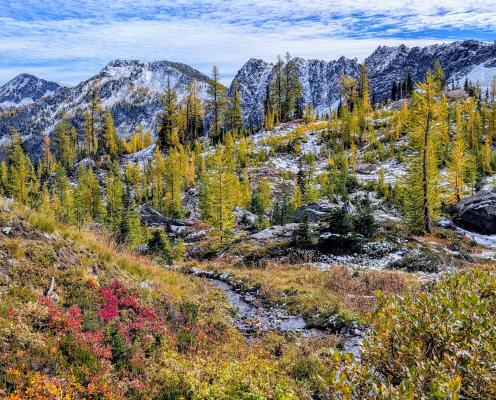
Eastern Washington loyalists
These trees enjoy growing in open areas, which means they grow well in fire-prone areas.
The larch is not only fire-resistant, it depends on fire to keep the forest floor open so it can reproduce. Human fire suppression has limited larches’ range, so fuel control and prescribed burning can be critical to saving the few remaining old growth stands.
These growing conditions may be one reason larches rarely live west of the Pacific Crest. That means you have to be on the eastside to see them, for now…
Moving to Canada
Even though they get abundant sunlight in eastern Washington, Montana, Colorado and other northern U.S. states, larches are at risk due to climate change.
There is research suggesting they could disappear from the U.S altogether if the climate continues to warm and dry out.
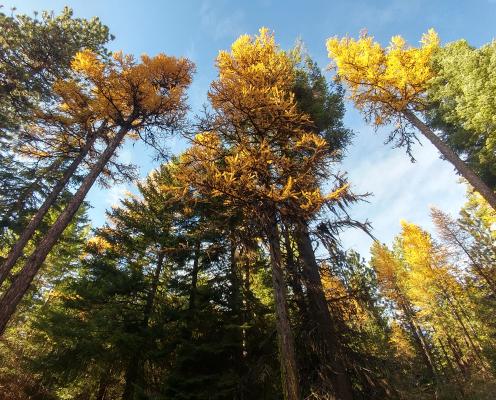
Where to larch march this fall
For the moment though, we have larch trees in many of our parks, including Lake Wenatchee, Alta Lake, Squilchuck, Lake Easton, Crawford, Twenty-Five-Mile Creek and Riverside.
But the two stand-out larch parks are Mount Spokane and Fields Spring. Wandering through them, you’ll see nearly pure stands of larch trees in small patches.
We also recommend a few park-adjacent larch hikes in our Field Guide Blog.
In addition to being breathtaking and highly photogenic, the Fields Spring and Mount Spokane larch stands make great nap spots. The soft leaves blanket the ground to make plush bedding. They invite tired-footed foresters to lie down and gaze up at the golden or bright green canopy against the cerulean sky.
Originally published December 26, 2024

